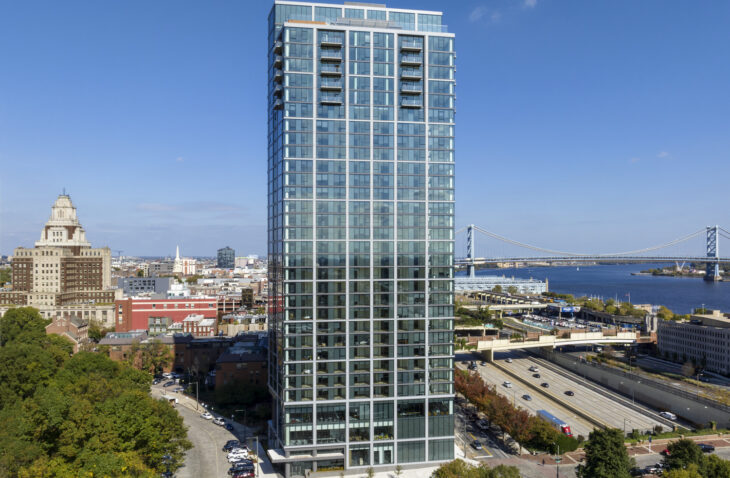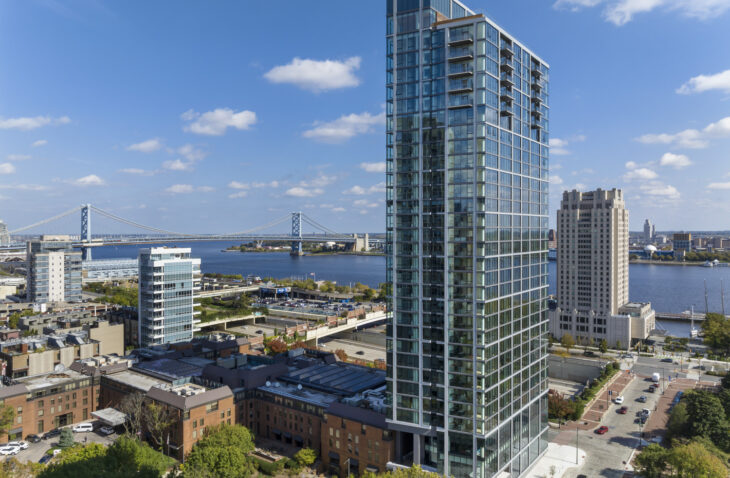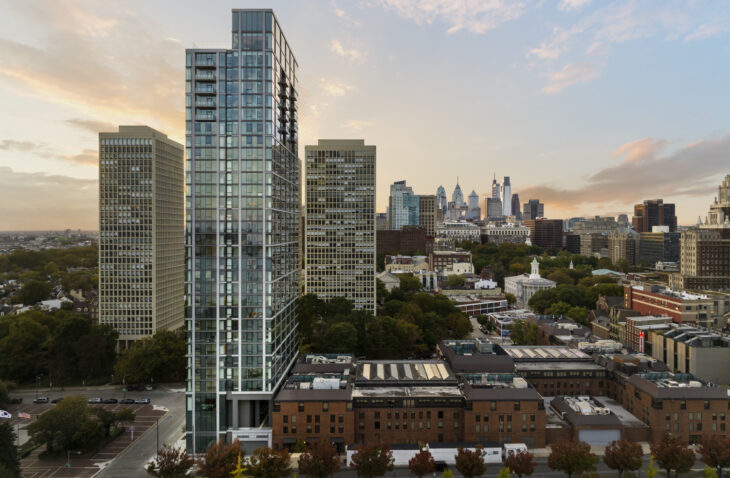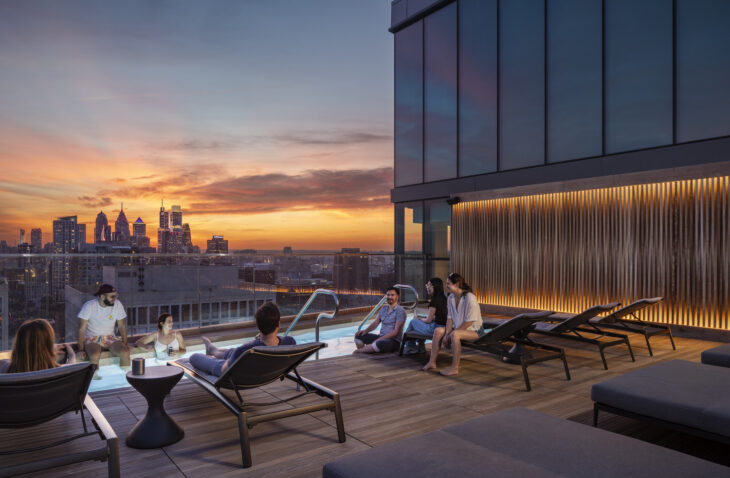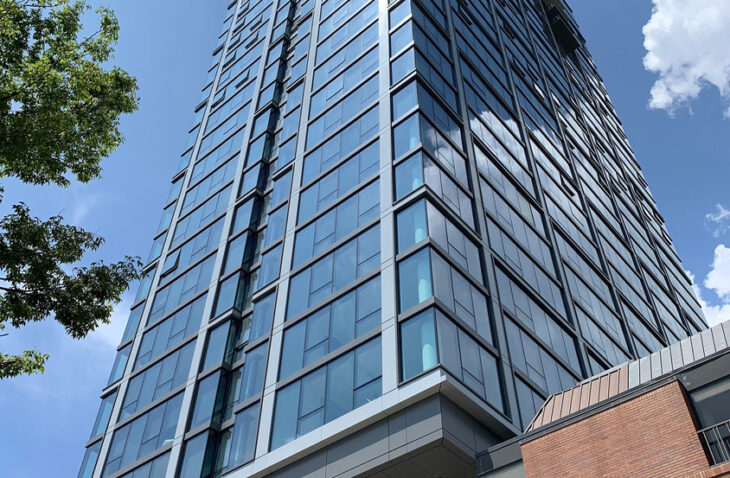Urban High-rise Residential Building
The project: The Ryland is a 31-story cast-in-place concrete structure reaching a height of 364 feet and situated mere inches from the existing Society Hill Marriott Hotel in Philadelphia, PA. The building houses 272 luxury apartment units, 15,00-sf of retail space, and 15 spaces of below-grade parking. Tenant amenities include a fitness center, co-working space with private offices, screening room, lounges with river and city views, and the rooftop Sky Deck featuring an infinity pool and outdoor kitchen.
The goal: Design the 300,000 square feet of interior space on a minuscule, 68-foot-wide, 9,200-square-foot site.
Design approach: IMEG’s design included a robust foundation system forming the backbone of The Ryland, employing auger cast pile technology with cast-in-place concrete pile caps and mat foundations. Temperature monitoring used during the concrete pour and curing process ensured structural integrity.
Challenge: Extremely tight positioning against the existing Marriott Hotel mandated that new building columns of The Ryland be located to maintain existing hotel window views.
Solution: Seven building columns were re-located via transfer girders at level 4 transition from the efficient apartment column grid above to the hotel-window-respective grid while also meeting parking aisle clearances in the cellar below. These girders support 27 stories of apartment levels. The transfer girder is supported by double-height columns which required a complex shoring system during construction. Columns beneath the transfer girder are founded on the edge of the mat foundation using extensive reinforcing steel to resolve the eccentric loads back towards the core of the foundation.
Challenge: The lateral stability of The Ryland relies on a combination of concrete shear walls interactive with a slab-column frame system. The primary elevator core, along with two additional shear walls, constitute the primary lateral elements. These walls, varying in thickness from 24” at the base to 12” at the top, accommodate the architectural complexities of the building’s design. The additional free-standing walls are about 26’ in length above the second level but needed to be shortened at the grade level to accommodate the below grade parking drive aisle.
Solution: The 26’ long shear walls step back to 20’ long below Level 2. This change in wall length created a condition where one end of the straight shear walls (supporting 29 floors) cantilevered past the supporting straight shear wall at Level 2. The cantilevered portion of the wall is heavily reinforced to resolve both gravity and lateral forces back into the shorter 20’ walls below Level 2.
The outcome: The Ryland showcases innovative solutions to architectural challenges while prioritizing safety, durability, and functionality. From the robust foundation system to the intricate design of transfer elements, each aspect demonstrates meticulous attention to detail and adherence to industry best practices.








